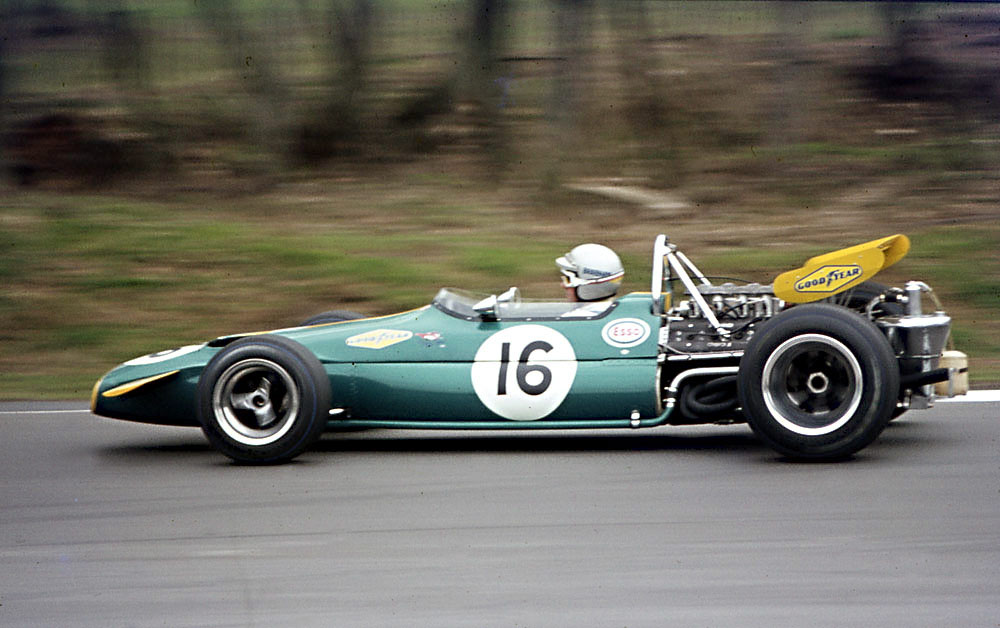The Australian three-time champion, who died in 2014, is the only driver in the history of Formula 1 who achieved a champion title in a single-seater car built by himself.
Sir Jack Brabham was the opposite of what we now understand as a sports media star. But he was one of the greatest athletes in history, at least in terms of achievements. Triple world champion of F-1; the last title, piloting a single-seater that he himself had designed. A milestone that nobody has been able to emulate. His history, talent and success deserve to be remembered as one of the great legends of motorsport.
Born in Hurstville, near Sydney, John Arthur Brabham did not belong to a wealthy family. His father had a fruit and vegetable stand, something that never went through Jack’s head as a way of life to come. Of course, with twelve years and driving the van of his father, but piloting was not his passion. He was to gut cars, to know how his insides worked. That’s why he was in charge of repairing the delivery truck. He entered a technical school of mechanical engineering, but left with fifteen years to go to work at a store of car parts that also worked as a garage.
Three years later he joined the Royal Air Force of Australia in Adelaide, where he wanted to learn to fly, but instead was required to fill a position of mechanic to fix ‘Beaufighters’ (heavy and long-range fighters) during the World War II due to the scarcity of them in Australian aviation. After leaving the army he convinced his grandfather to ceded land and uncle, builder, to build her a hangar that Brabham became the first garage. There he met an American pilot, John Schonberg, husband of a friend, who introduced him to the world of the ‘midgets’. They joined forces for Brabham to design a car and Schonberg to pilot it. In the third race, the American woman forbade him to drive and Brabham did not think about it.
There was born the pilot who won four Australian titles in the category. At that time he decided to marry his girlfriend Betty, mother of his three children, and in the 50s he went to Europe to run the F-2 and work as a mechanic in Cooper, with which he debuted in Formula 1. Four years later he won his First title in a unique way: pushing the car the last fifty meters in Sebring. His Cooper ran out of gasoline 400 meters from the finish line and the inertia brought him closer to 50 of the checkered flag, the last meters he ran through with a kidney stroke. Thus, he proclaimed himself world champion for the first time, a success that he also repeated with Cooper the following season.
Brabham was a special guy. He refused to work for Ferrari despite receiving the call from the ‘Commendatore’ himself, Enzo Ferrari. “I never went to the meeting, I was not interested, I was only in beating them, not in joining them. Ferrari was the rival, and had to be treated as such. “His biography was entitled ‘When the race begins, the bullshit is over’, a perfect definition of the ideal of Sir Jack’s work, a man dedicated body and soul to improve. “We spent the day and night building cars, and we drove to relax,” he confessed many years after retiring. It was the memory that those years brought him.
In 1970 he retired at the request of his wife. It left for the legend a unique career that has escaped the great flashes of memory. Few include him among the greats of history, but he was certainly one of them. At least the one who knew the most about cars and that’s why it’s not surprising that he chose Stirling Moss as the best driver he had ever seen. Someone who never won a single title. Of course, he was four times runner-up and three times third. Last year, in an interview with an ‘aussie’ media, Brabham was asked how he saw most of the current riders not knowing mechanics. Black Jack replied: “My ability to understand and modify the car certainly helped in my success. There are very few pilots today who know a lot about how to set up and design a car. They are almost totally dependent on their engineers and equipment to help fine-tune the setup. The notion of ‘pilot-engineer’ is an art in extinction. It’s a shame, but it’s symptomatic of the changes that motor sport has experienced in recent years. ”



